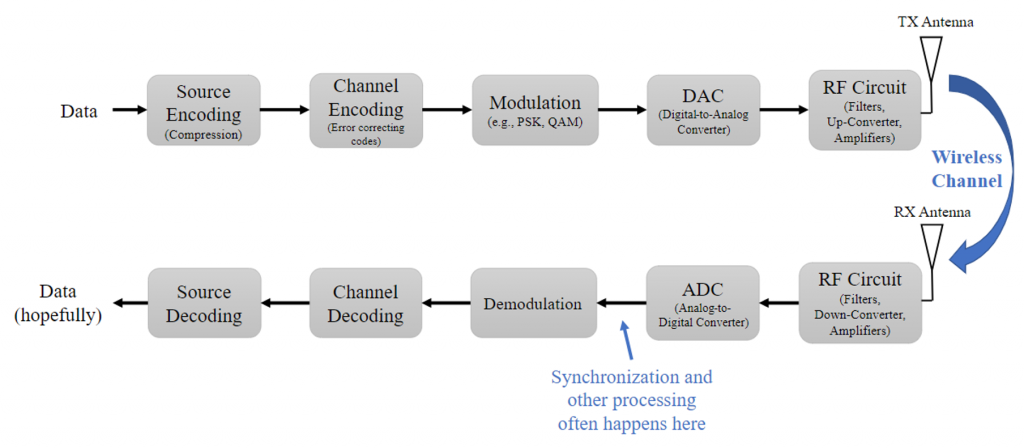
Analog Modulations Intro
Introduction
Analog modulations are used for information signals that contain analog information, for example radio stations that transmit voice, music and/or video. We study analog modulation because they form the foundation of all communication systems.
From the Fundamental Knowledge section, I presented a typical SDR Tx-Rx Chain block diagram (figure below).

I mainly used that block diagram to organize where some concepts of Information Theory, Communication Theory and Signal Processing are being considered and implemented in a SDR communication system.
However, analog modulations typically don't need or have some of the blocks on that diagram. For example, source and channel encoding/decoding are not applicable for analog signals. The information signal can go directly to the desired analog modulation scheme, and that can be a reason why sometimes this block diagram can generate some confusion while studying analog modulations using SDR hardware.
That block diagram is used in literature interchangeable and one of the reasons why is because, in SDR context, analog modulations (real numbers) are a special case of digital modulations (complex numbers), and we can use the same hardware to implement both types of modulations. If you are not familiar with this relationship, don't worry for now about it, I will cover it on another article.
With that in mind, we can redraw that block diagram (figure below) in a way that represents other types of information signals (or baseband signals). The Baseband Processing block represents the techniques used to process information signals that can have analog and/or digital signals.

This new Tx-Rx Chain block diagram will become handy to understand GNURadio flowgraphs that use both analog and/or digital information signals.